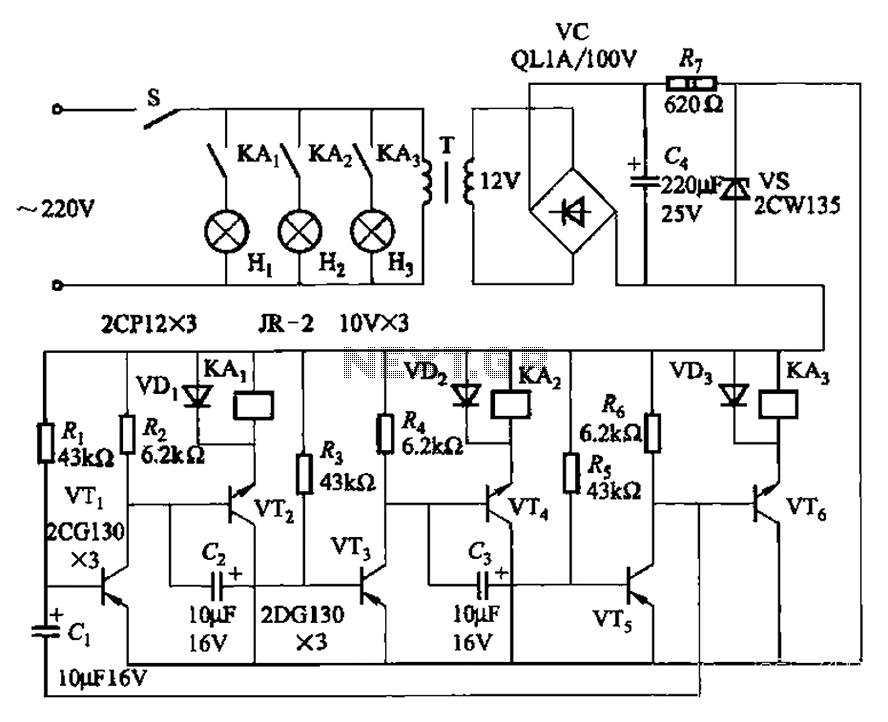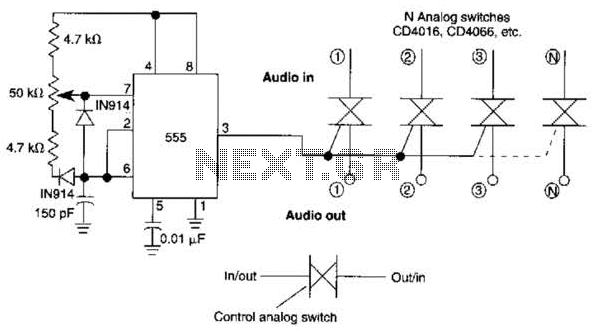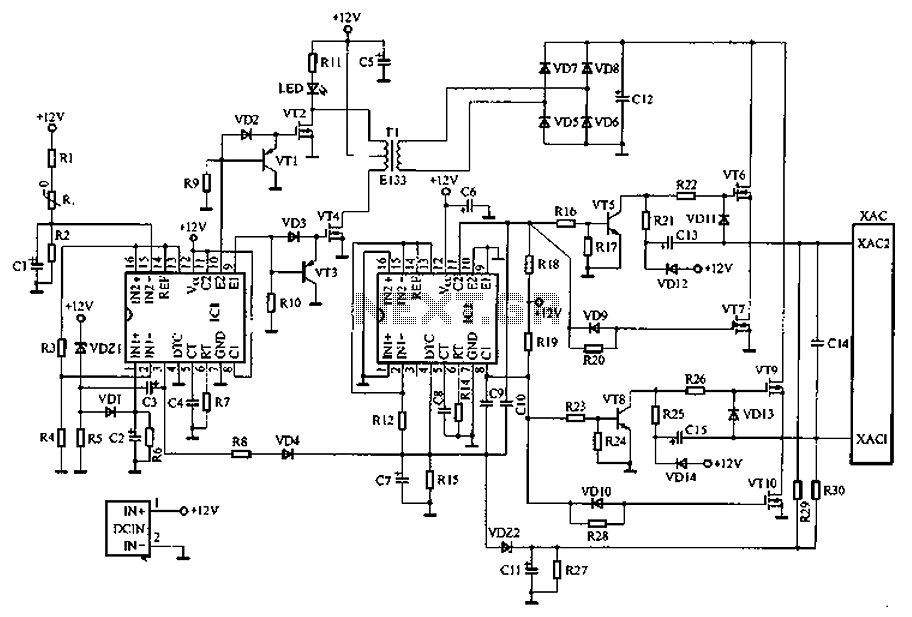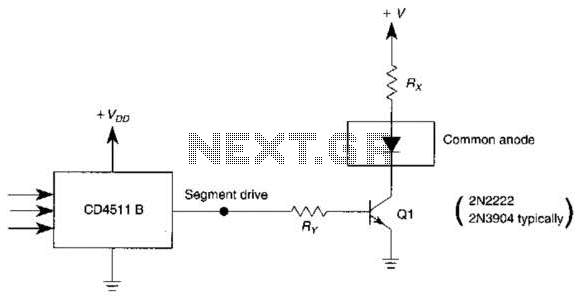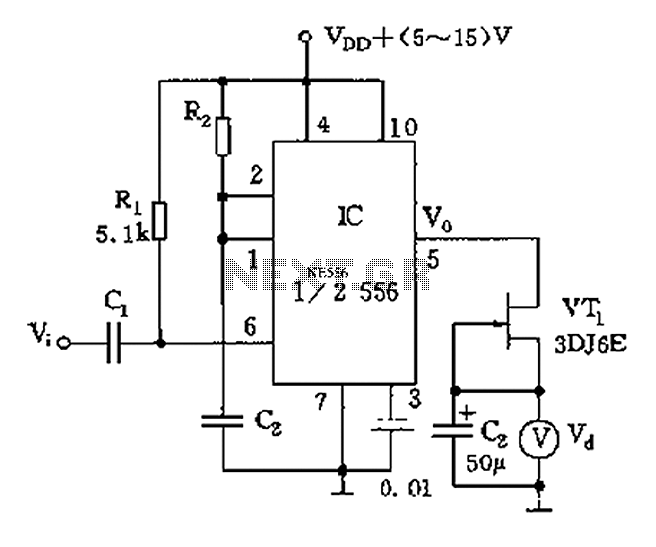
Two-tone doorbell circuit
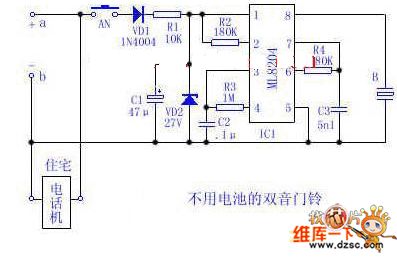
Utilize the 48V (60V) DC feedback electric current supplied by the phone feedback line as the operational energy source for the electronic doorbell, which is highly economical and practical. This document introduces a two-tone doorbell circuit that operates without a battery. The circuit depicted in the figure is a variation of the conventional telephone ringing circuit.
The two-tone doorbell circuit takes advantage of the DC feedback from the telephone line, enabling it to function without the need for an external power source, making it both cost-effective and efficient. The circuit is designed to detect the presence of a ringing signal on the phone line, which typically operates at 48V to 60V. When the phone rings, the circuit activates, generating two distinct tones to signal the doorbell.
The core components of the circuit include a transformer, diodes, capacitors, and a tone generator. The transformer steps down the high voltage from the telephone line to a manageable level for the circuit. Diodes are used to rectify the AC signal from the transformer into a DC signal, ensuring that the circuit operates smoothly. Capacitors filter any noise and stabilize the power supply to the tone generator.
The tone generator is configured to produce two different frequencies, creating the two-tone effect. This is typically achieved using a 555 timer IC or a microcontroller programmed to output specific frequencies. The output is then connected to a small speaker or buzzer, which produces the audible sound when the doorbell is activated.
The design of this doorbell circuit emphasizes simplicity and reliability, making it suitable for various applications where a battery-operated solution is not feasible. The use of existing telephone infrastructure for power not only reduces the overall cost but also minimizes maintenance requirements, as there are no batteries to replace. This innovative approach to doorbell design demonstrates how conventional technologies can be adapted for modern applications, providing a practical solution for everyday needs.Use the 48V (60V) DC feedback electric current which is provided by the phone feedback line as the working energy of the electronic doorbell is very economical and practical. Now I introduce one kind of two-tone doorbell circuit with out battery. The circuit is as shown, circuit in this figure is the variant of conventional telephone ringing circuit.
a, b.. 🔗 External reference
The two-tone doorbell circuit takes advantage of the DC feedback from the telephone line, enabling it to function without the need for an external power source, making it both cost-effective and efficient. The circuit is designed to detect the presence of a ringing signal on the phone line, which typically operates at 48V to 60V. When the phone rings, the circuit activates, generating two distinct tones to signal the doorbell.
The core components of the circuit include a transformer, diodes, capacitors, and a tone generator. The transformer steps down the high voltage from the telephone line to a manageable level for the circuit. Diodes are used to rectify the AC signal from the transformer into a DC signal, ensuring that the circuit operates smoothly. Capacitors filter any noise and stabilize the power supply to the tone generator.
The tone generator is configured to produce two different frequencies, creating the two-tone effect. This is typically achieved using a 555 timer IC or a microcontroller programmed to output specific frequencies. The output is then connected to a small speaker or buzzer, which produces the audible sound when the doorbell is activated.
The design of this doorbell circuit emphasizes simplicity and reliability, making it suitable for various applications where a battery-operated solution is not feasible. The use of existing telephone infrastructure for power not only reduces the overall cost but also minimizes maintenance requirements, as there are no batteries to replace. This innovative approach to doorbell design demonstrates how conventional technologies can be adapted for modern applications, providing a practical solution for everyday needs.Use the 48V (60V) DC feedback electric current which is provided by the phone feedback line as the working energy of the electronic doorbell is very economical and practical. Now I introduce one kind of two-tone doorbell circuit with out battery. The circuit is as shown, circuit in this figure is the variant of conventional telephone ringing circuit.
a, b.. 🔗 External reference
Warning: include(partials/cookie-banner.php): Failed to open stream: Permission denied in /var/www/html/nextgr/view-circuit.php on line 713
Warning: include(): Failed opening 'partials/cookie-banner.php' for inclusion (include_path='.:/usr/share/php') in /var/www/html/nextgr/view-circuit.php on line 713
